 Kitchari is an Ayurvedic staple generally made from yellow split mung (moong) dal and Basmati rice. This dish is the basis of most Ayurvedic cleanses, and in this context, is generally eaten as a mono-diet meal (meaning the only food eaten) for breakfast, lunch, and dinner for the duration of the cleanse. Although you can get pretty creative with kitchari recipe variations, during a cleanse it is important to keep the ingredients light and fairly basic. But don’t let these guidelines fool you; basic does not have to mean bland. This recipe may be simple but is equally as delicious and flavorful!
Kitchari is an Ayurvedic staple generally made from yellow split mung (moong) dal and Basmati rice. This dish is the basis of most Ayurvedic cleanses, and in this context, is generally eaten as a mono-diet meal (meaning the only food eaten) for breakfast, lunch, and dinner for the duration of the cleanse. Although you can get pretty creative with kitchari recipe variations, during a cleanse it is important to keep the ingredients light and fairly basic. But don’t let these guidelines fool you; basic does not have to mean bland. This recipe may be simple but is equally as delicious and flavorful!
Why Kitchari For A Cleanse?
Kitchari is used as the main food in Ayurvedic cleanses for multiple reasons. One essential goal during an Ayurvedic cleanse is to give the digestive fire (Agni) a break to allow it to reset and renew. Due to its warm, soupy, and light nature, kitchari is considered very easy to digest and is the perfect dish for providing the Agni with the rest that it needs.
But there are plenty of warm, soupy meals that are considered light and easy to digest, so why kitchari? Kitchari is high in vitamins and minerals and is a great complete protein source (meaning it contains all the 9 essential amino acids). This means you can go through your cleanse without starving your body or depleting your cells of nutrients.
Finally, kitchari has many complementary ingredients that will aid in kindling digestion and supporting detoxification. These include cilantro (also great for chelation!), lemon juice, ghee, and of course warming digestive spices such as ginger, turmeric, cumin, and black pepper.
Get all your kitchari needs with our Kitchari Cleanse Kits!
Can Kitchari Be Eaten In The Daily Diet?
As great as kitchari is during a cleanse, it can be a healthy, nutritious, and delicious addition to your weekly meal routine. I began making kitchari back in 2007 and I have eaten it for at least half of my weekly meals since (ok, so I may be a bit obsessed). Luckily, kitchari can be made in many different ways using many different ingredients. Using different kitchari recipes (or making up your own!) will keep things interesting and ensure more nutritional variety in the diet. So if you love kitchari as much as I do, it is best to use a wide range of grains, vegetables, and legumes if you are eating it for a large portion of your meals. Replacing half of the water base with homemade meat, bone, or veggie broth is a great way to add flavor and nutrients as well (I always do!).
TIPS before cooking:
- During a cleanse it is recommended to make this recipe fresh each day; this recipe should feed one person for three moderate size meals.
- Soaking the beans and grain before cooking is recommended to make them easier to digest, lighter in quality, and remove anti-nutrients and enzyme inhibitors (which inhibit nutrient absorption and digestion).
- Using high-quality, organic, and fresh ingredients will provide the most flavor and health benefits; this includes using fresh ginger, fresh turmeric (when available), fresh cilantro, and dry spices that are not old or lifeless (most powdered dry spices have a one-year shelf life and whole spices about two years).
- The veggies in the recipe are optional; if you are performing a strict cleanse, feel free to leave them out (you can add them in during your post-cleanse phase).
- For a vegan option, you can replace the ghee with sesame oil or olive oil.
- I prefer to use a slightly less grain-to-legume ratio; a more traditional kitchari recipe is made with a 2:1 or 1:1 grain-to-legume ratio.
- Kapha types* may find Basmati rice too starchy and heavy; in this case, use an equal amount of quinoa to replace the rice. *I am not Kapha but prefer the quinoa over rice anyhow.
- Vata types that are already excessively light by nature may wish to replace half or all of the water with homemade chicken or bone broth to make it more nourishing and nutrient-rich.
- If you prefer a soupier kitchari, you can add a little more water at the end of the cooking process (or as needed during the cooking process).
- If you prefer a thicker kitchari, you can start with slightly less water and add more in as needed later.
- If constipation arises during your Kitchari cleanse (due to the lightness of the diet) I suggest adding more fiber by increasing the veggies, and replacing the Basmati rice with a whole grain option (brown rice will require more water and cooking time FYI); you can also take 1 teaspoon of Triphala Churna before bed each night. Make sure to add plenty of ghee to each serving (avoid this recommendation for high Kapha, high cholesterol, and obesity).
Get all your kitchari needs with our Kitchari Cleanse Kits!
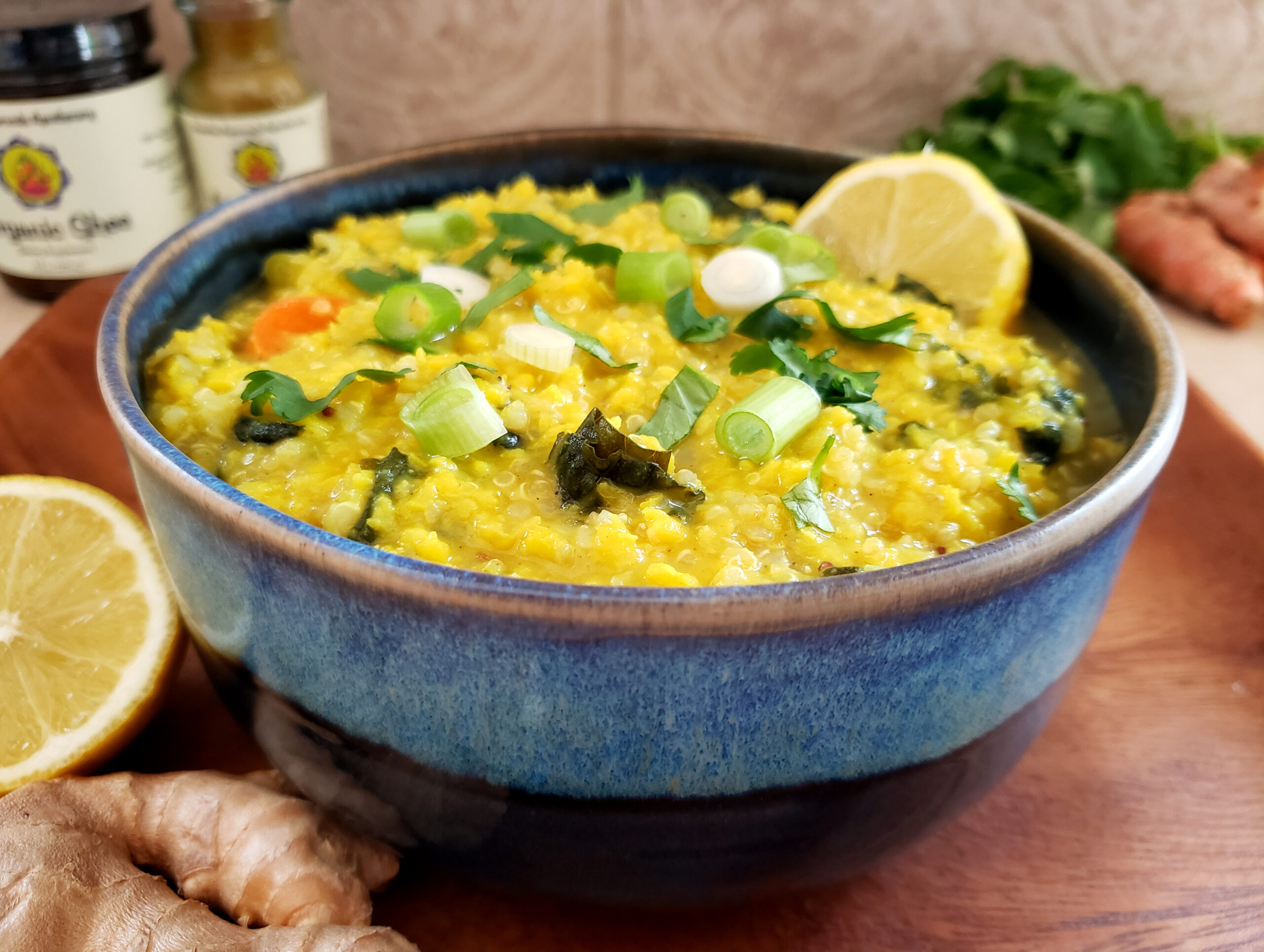
The Best Basic Kitchari Recipe
Click here for a printable copy of this recipe.
- Doshic Effect: Vata ↓, Pitta ↓, Kapha ↓
- Serves: 3 to 4
- Prep Time: 5 minutes
- Cook Time: 35 to 40 minutes
Materials
- Large soup pot
- Cutting board and knife
- Measuring cups and spoons
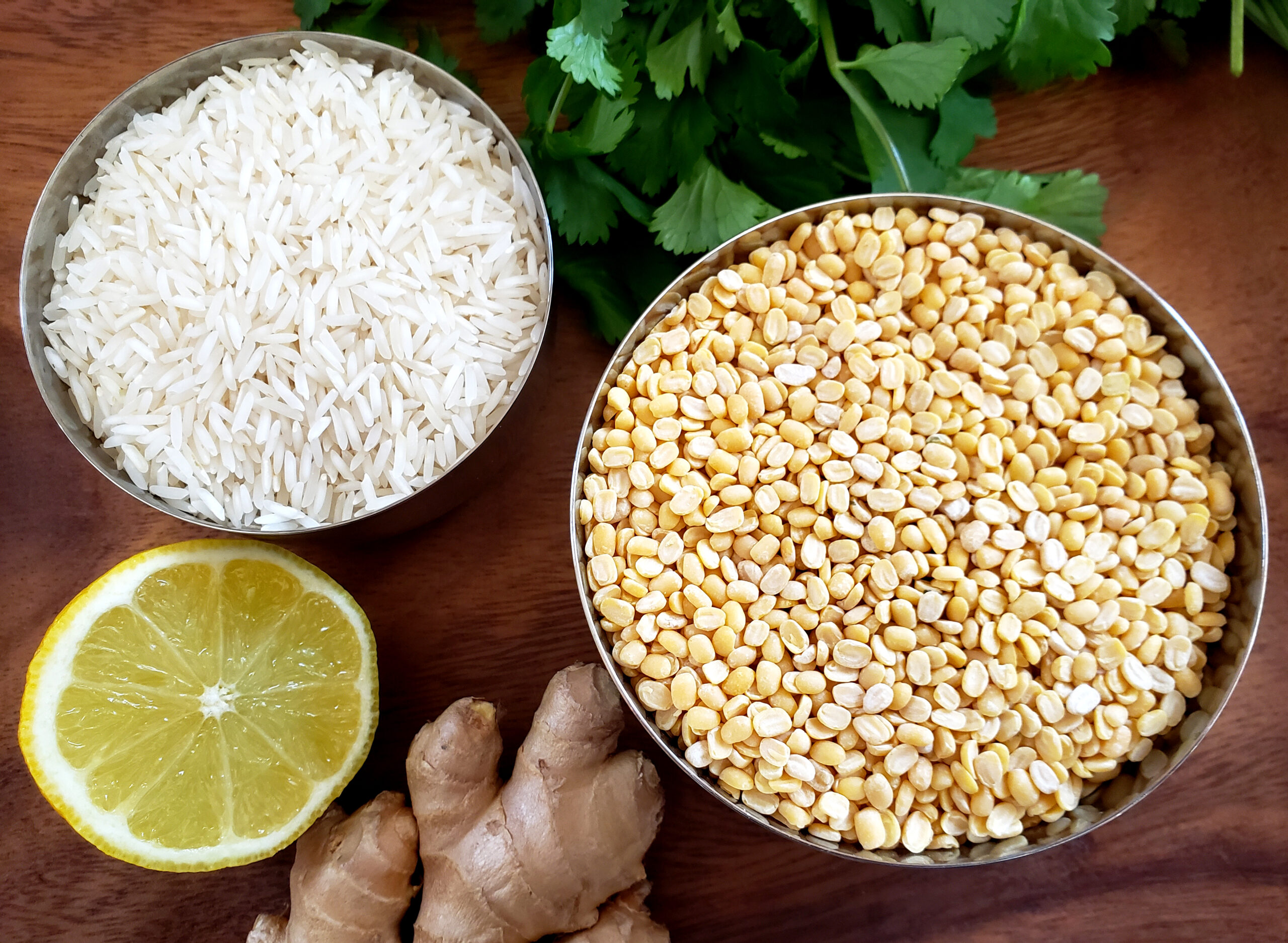
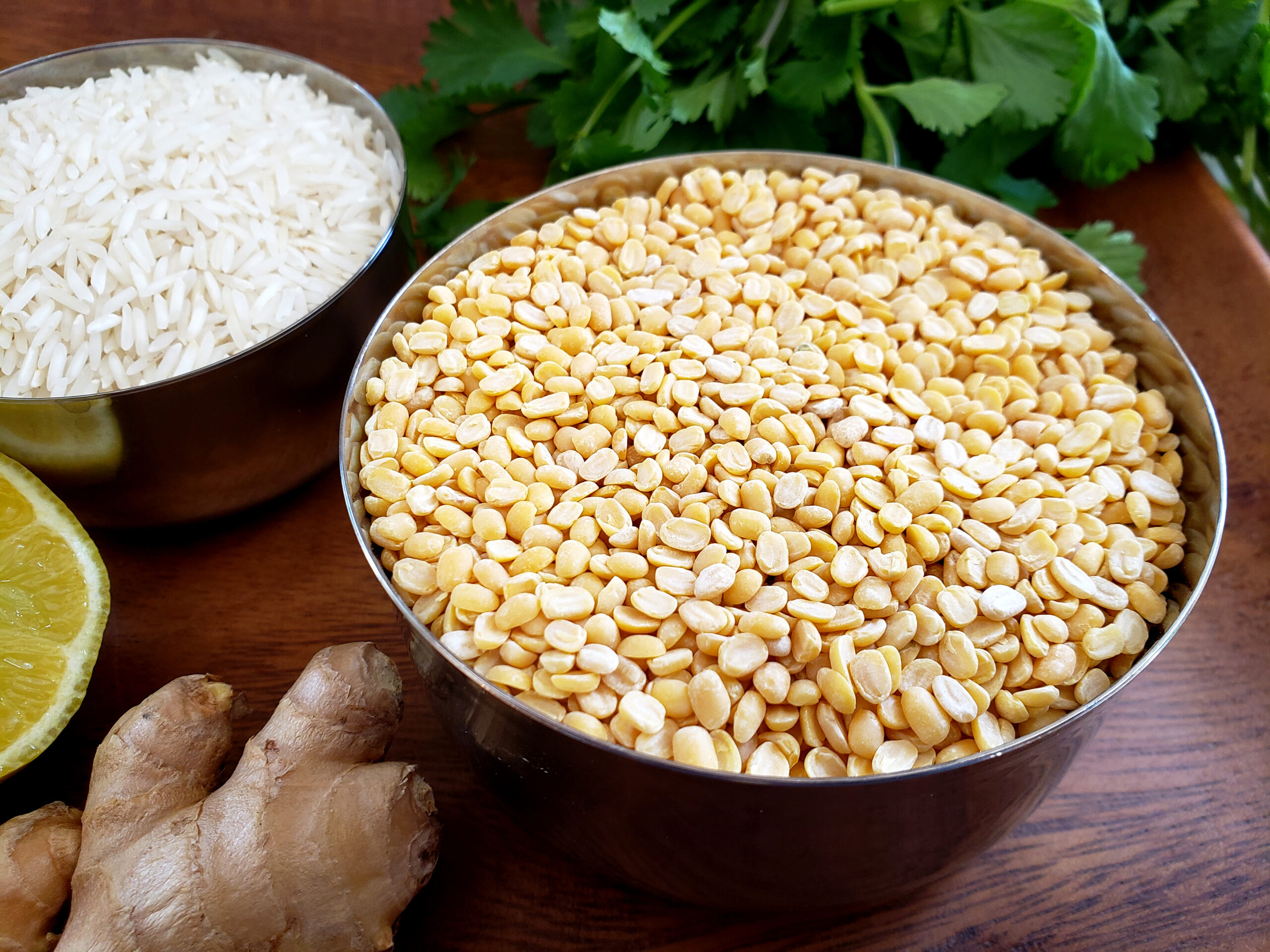
Ingredients
- 2 tablespoons ghee (substitute with sesame or olive oil)
- 1/2 teaspoon cumin seed, whole
- 1/2 teaspoon brown mustard seed, whole (omit for Pitta)
- 1/2 teaspoon freshly ground black pepper
- 2 tablespoons finely minced ginger
- 1 to 2 teaspoons Agni Churna
- 5 cups water (add more later if soupier kitchari is preferred!)
- 1 cup split mung dal
- 3/4 to 1 teaspoon pink Himalayan salt or mineral salt
- 2/3 cup Basmati rice or quinoa (use quinoa for Kapha types)
- 1 small carrot, thinly sliced*
- 2 medium celery stalks, thinly sliced*
- 1 large kale leaf (or 2 small), stemmed and chopped* (substitute with any suitable bitter green)
- 1/2 large or 1 small lemon, juiced (use lime for Pitta)
- 1 teaspoon freshly grated turmeric or 1/2 teaspoon turmeric powder (fresh is best when available)
- Chopped cilantro, for garnish
- Chopped green onion (scallions), for garnish (optional, avoid for Pitta)
- Ghee, for individual servings (optional, keep minimum for Kapha)
*These vegetables can be omitted during a strict cleanse if veggies are not allowed in the diet. They can be added in during the post-cleanse phase when appropriate.
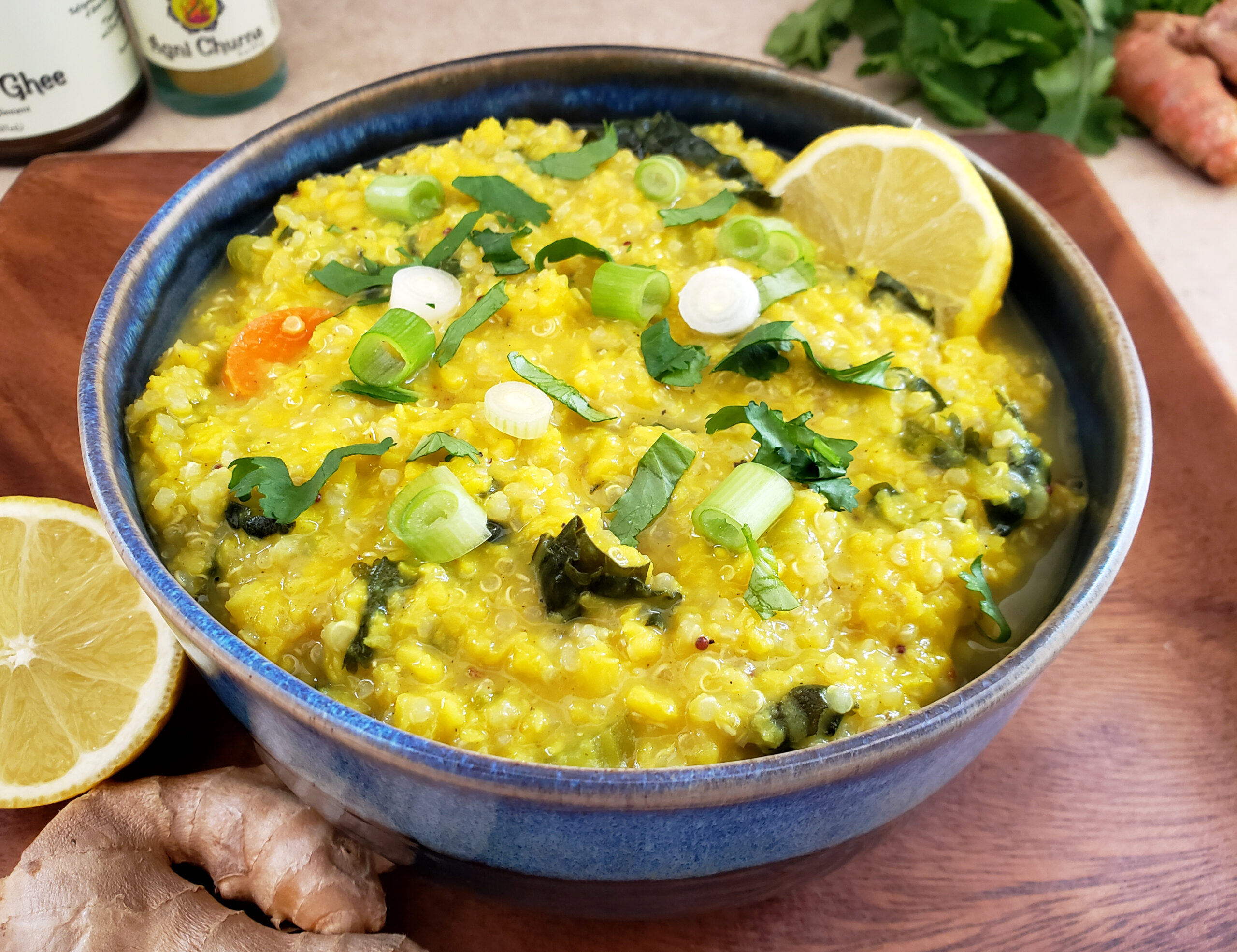
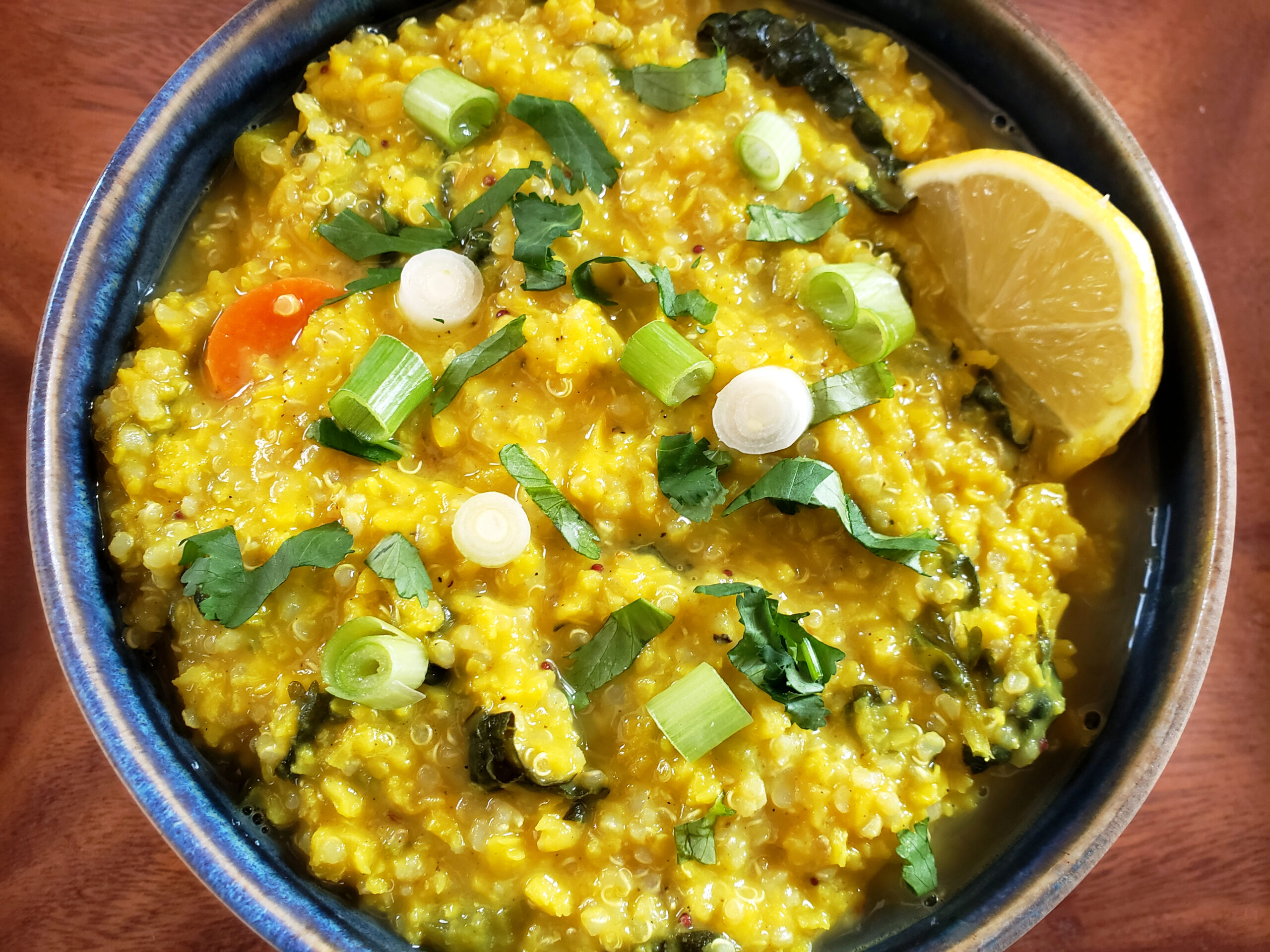
Directions
Click here for a printable copy of this recipe.
1. Soak the mung dal overnight. Strain and discard the soaking water before adding it to the pot.
2. Soak the quinoa or rice overnight. Strain and discard the soaking water before adding it to the pot.
3. Mince the ginger and set aside.
4. Heat a large saucepan over medium heat and add in the ghee. Once hot, add in the cumin, brown mustard seed, and black pepper. Stir over a medium heat for 2 minutes.
5. Add in the fresh ginger and Agni Churna. Sauté for an additional 30 seconds stirring constantly.
6. Add in the water and bring it to a boil over high heat.
7. Once boiling, reduce the heat to low-medium and add in the mung dal and salt. Cover the pan, leaving a slight opening to prevent overflow. Cook for 15 minutes, stirring halfway.
8. As the beans are cooking, begin to slice up the carrot, celery, and kale.
9. After 15 minutes, add the rice, carrot, celery, and kale to the pot. Stir well and cover the pan, keeping it slightly cracked. Cook over low-medium heat for 12 minutes, stirring every 3 to 4 minutes. If the kitchari becomes too thick, carefully add more water by the quarter cup until the desired consistency is reached.
10. After 12 minutes, reduce the heat to the lowest setting, cover the pan completely, and cook for the remaining 3 to 5 minutes. Stir every minute to avoid the kitchari sticking to the bottom of the pan.
11. Turn off the heat and take the pan off of the hot burner. Add in the fresh lemon juice and turmeric. Stir well to blend all of the ingredients evenly. Cover the pan and let it sit for a few minutes to allow the flavors to harmonize.
12. Serve warm and enjoy. For added cleansing effects, garnish generously with cilantro, scallions (if using), and extra ghee. Add more salt and pepper if needed.
13. During a cleanse this kitchari should be made fresh daily; however, it will keep for up to 3 to 5 days in the refrigerator. Reheat over low heat and add 1/4 cup of water, 1 teaspoon of ghee, fresh lemon juice, and a dash of salt and pepper with each serving. After heating, garnish each serving with chopped cilantro and scallions (if using).

Additional Tips
- If you do not have enough time for soaking the beans overnight, place the beans in a glass container and cover them with boiling water. Let the beans soak in the hot water for a minimum of 30 minutes, although at least 3 to 6 hours will be best.
- The first week after your kitchari cleanse, continue to include this recipe for at least one meal daily to ease off your cleanse as you slowly rebuild your strength and digestion.
- 3 to 5 days after your cleanse, switch to a more rejuvenating kitchari recipe such as our Rejuvenation Kitchari or Vata-Reducing Kitchari.
- Our Breakfast Kitchari recipe is a delicious choice after a cleanse (or anytime) as well!
- Replace the Agni Churna with Vata Churna, Pitta Churna, or Kapha Churna to make it more balancing for your dosha type.
- Enjoy this meal as an ongoing lunch and dinner one day each week to keep the Agni (digestion) strong and the body light.
Try our Agni Churna Spice Blend!
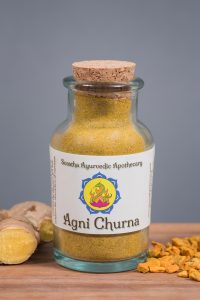
Try our 7-day Traditional Kitchari Kit!
Try our 7-day Quinoa Kitchari Kit!
Discover more healing recipes with my 30-Minute Ayurvedic Cookbook!

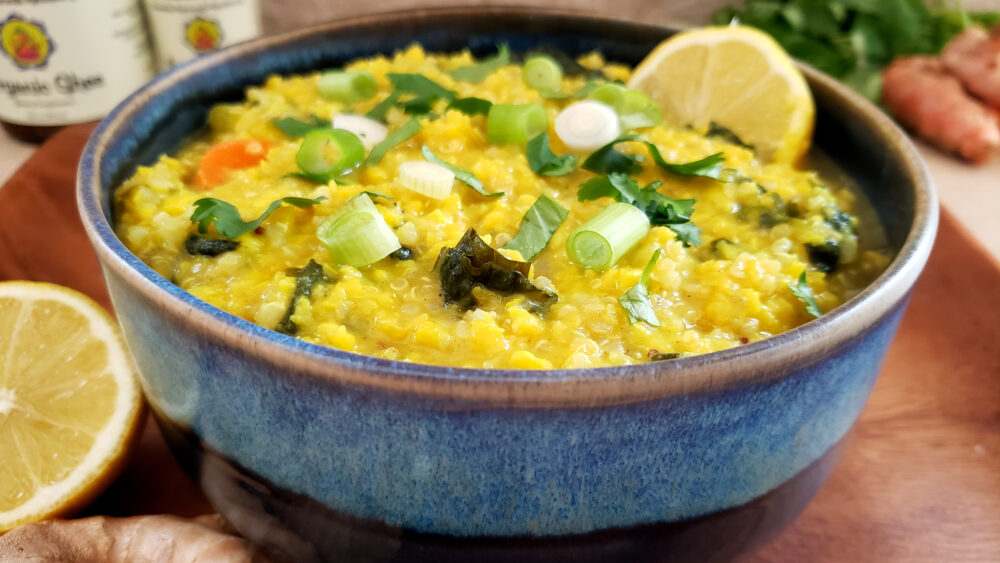
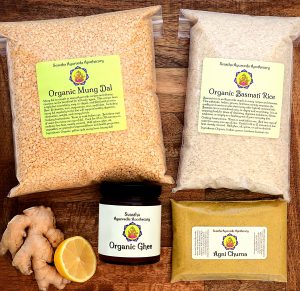
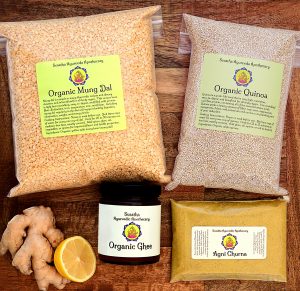
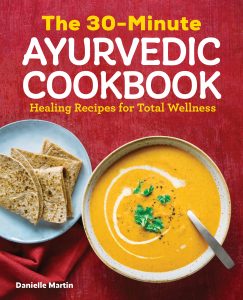

Hi, can I check why there is call to add Agni Churna and also the separate spices it contains? Is it possible to just add the separate spices and leave out?
Many thanks
Kat
Hi Kat,
Thank you for your question! The Agni Churna is intended to be added in addition to the other spices listed. If you do not have this blend, it can be replaced with any Garam Masala or curry spice blend. If you do not have these, I recommend replacing it with 3/4 teaspoon (each) of ginger and turmeric powder, and 1/4 teaspoon (each) of fennel and coriander powder.
Let me know if you have any further questions!
EnJOY!!
Namaste,
Danielle